How To Elevate Your Small Business Using 6 Lead Generation Tactics (+ Common Mistakes)
Helpful Summary
- Overview: This article discusses six potent lead-generation methods for small businesses and provides insight into common errors to avoid.
- Why you can trust us: Growform has established itself as a highly successful tool for lead generation, particularly for small businesses. Our focus on conversion rate optimization sets us apart from general-purpose form builders.
- Why this is important: This guide provides practical, cost-effective lead generation strategies to help small business owners attract potential customers and grow their businesses.
- Action points: Utilize lead magnets like ebooks or discount codes to collect prospective clients’ data, define your target market, design an irresistible lead magnet, and optimize the opt-in form for the highest conversions.
- Further research: Check out the Growform Blog or YouTube channel for more lead-generation tactics and information.
Struggling to Attract New Customers to Your Small business?
Many entrepreneurs face stagnant growth and struggle to capture new leads. However, all is not lost. Imagine having a steady stream of qualified prospects knocking at your door, eager to learn about your services.
Lead generation is indispensable for small businesses looking to grow and expand. Whether you’re a performance marketing agency, solar panel installer, or in real estate, Growform’s six lead generation strategies are the key to a thriving business.
From cold calling techniques to leveraging the power of lead magnets, we’ll show you how to transform your approach and supercharge your customer acquisition efforts.
Why Listen to Us?
The Growform platform is designed to help small businesses optimize their lead generation through features like conditional logic and lead capture forms. Our focus on small business needs ensures that our solutions are practical and tailored to address the unique challenges of capturing leads for growing businesses.
We have built credibility through positive feedback from numerous customers. Users report increased lead conversion rates and improved marketing outcomes with Growform. Our reliability is amplified by testimonials and case studies, proving our effectiveness in delivering results for our clients.
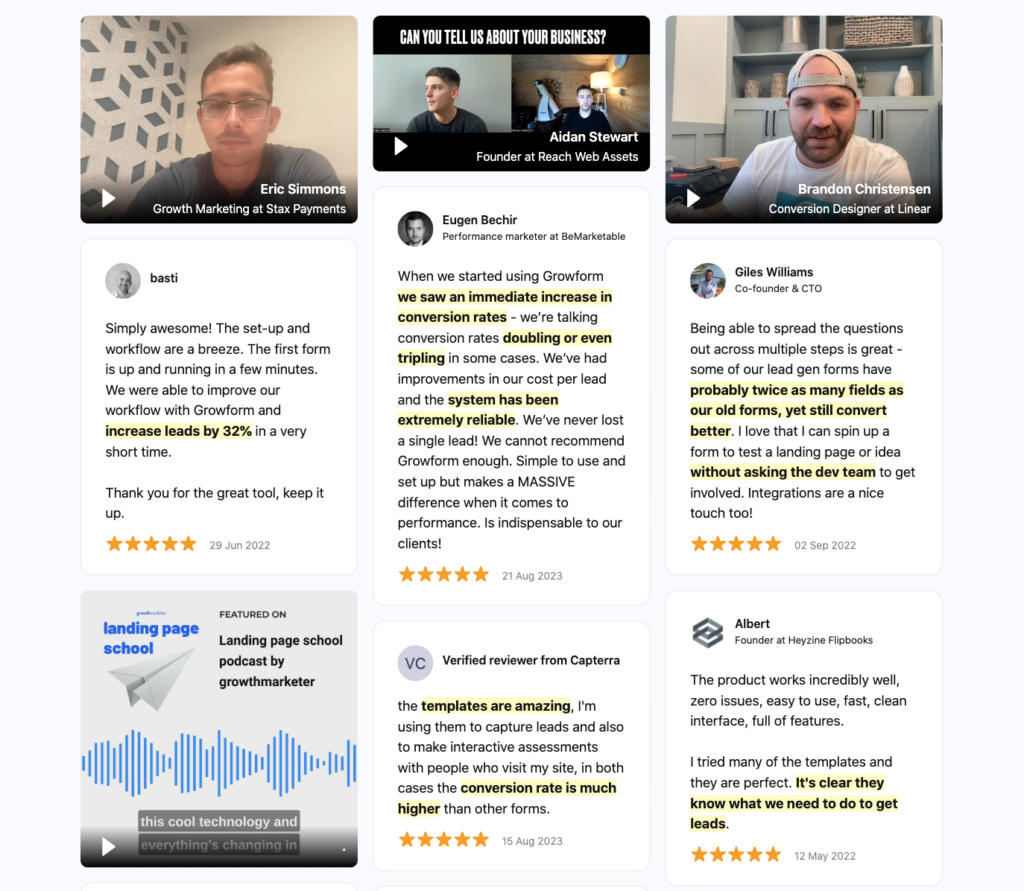
What is Lead Generation?
Lead generation is the process of attracting potential customers and nurturing them into becoming loyal clients. For small businesses, it involves identifying a target audience, crafting a compelling value proposition, and offering a clear call to action (CTA) that encourages prospects to engage.
Lead generation can be executed through various methods, including content marketing, lead magnets, social media, SEO, and email campaigns. It’s the foundation of any successful sales and marketing strategy, particularly for small businesses that need to grow their client base and stay competitive.
Why Is Lead Generation Essential for Small Businesses?
Lead generation is crucial in customer capture and business growth. It represents the initial step in attracting potential customers. By identifying, attracting, and nurturing prospects, businesses can expand their customer base and drive revenue growth.
Targeted lead generation is particularly cost-effective for small businesses with limited budgets for several reasons, including:
- Efficient Resource Allocation: Targeting specific audiences helps small businesses use their limited resources more effectively, ensuring they focus on those most likely to convert..
- Higher quality Leads: It attracts individuals genuinely interested in the offered products and services, yielding higher quality leads. This approach reduces the cost per lead and boosts conversion changes.
- Reducing Marketing Costs: Targeted campaigns let small businesses minimize spending on broad marketing tactics with unclear returns and helps them focus on platforms that deliver the best results for their audience.
- Improved ROI: Targeted lead generation enhances the ROI. By focusing on high-converting leads, businesses can see a higher return on investment (ROI) from their marketing efforts and campaigns. This strategy is vital for small businesses aiming to optimize every expense.
6 Effective Lead Generation Strategies for Small Businesses
- Cold Calling
- Cold Emailing
- Lead Magnet
- Multi-Channel Marketing
- SEO and Competitor Analysis
- Webinars and Free Trials
1. Cold Calling
Cold calling involves reaching out to potential customers who haven’t expressed prior interest. Though it’s seen as intrusive, it can open up new business opportunities if done effectively.
Here are the key steps involved in cold calling:
- Define Objectives: Establish the goal of your call, whether it’s to schedule an appointment, qualify a lead, or introduce a product.
- Research Prospects: Conduct thorough research on potential customers to personalize the call and understand their needs. This includes checking their LinkedIn profiles and the online content they’ve produced.
- Create a Targeted Prospect List: Develop a list of prospects based on an ideal customer profile, considering factors like industry, job title, and company size.
- Develop a Call Script: Prepare a flexible script that includes the call’s introduction, purpose, and key talking points. This will help maintain clarity and confidence while allowing for a natural conversation.
- Choose Optimal Call Times: Identify the best times to reach prospects when they are likely to be available and receptive.
- Handles Objections and Rejections: Be prepared to address common objections and maintain professionalism even if the call doesn’t go as planned.
- Follow-Up: After the call, send a follow-up email to thank the prospect and outline any next steps, while keeping the door open for future engagement.
2. Cold Emailing
Cold emailing is the practice of sending unsolicited emails to potential customers who have not previously interacted with your brand. It is a cost-effective and scalable way to reach a broad audience, generate leads, and build relationships with prospects. It is a popular method, with 34% of people preferring to be contacted by businesses this way. However, recipients can often ignore, delete, or mark emails as spam.
These are the key steps for cold emailing:
- Identify Your Target Audience: Research and define your ideal customer profile to ensure your emails are sent to prospects most likely to be interested in your offerings.
- Build a Prospect List: Create a list of potential leads based on your target audience. Ensure the email addresses are verified to reduce bounces and improve deliverability.
- Craft a Personalized Email: Write a concise and engaging email with a clear purpose. Personalize the message by addressing the recipient’s specific needs or pain points and explaining why you contacted them.
- Create an Attention-Grabbing Subject Line: Develop a compelling subject line that captures the recipient’s attention and encourages them to open the email.
- Include a Clear Call to Action (CTA): Clearly state what you want the recipient to do next, whether it’s scheduling a call, visiting your website, or replying to the email.
- Follow Up Strategically: Send follow-up emails to increase the chances of a response. Be polite and persistent.
3. Lead Magnet
A lead magnet is a free offering, such as an ebook or discount code, provided by a business in exchange for the prospect’s contact information to help build a targeted mailing list. They help companies to engage with prospects, establish trust, and qualify leads at a lower cost.
Lead magnets make it easy for small businesses to guide prospects through the sales funnel, ultimately increasing conversion rates and driving sales. They require careful planning to ensure the content is valuable and relevant to the target audience.
Businesses use Growform for effective lead magnets because our multi-step lead capture forms are customizable and easy to embed. This allows businesses to integrate forms seamlessly into their websites and landing pages.
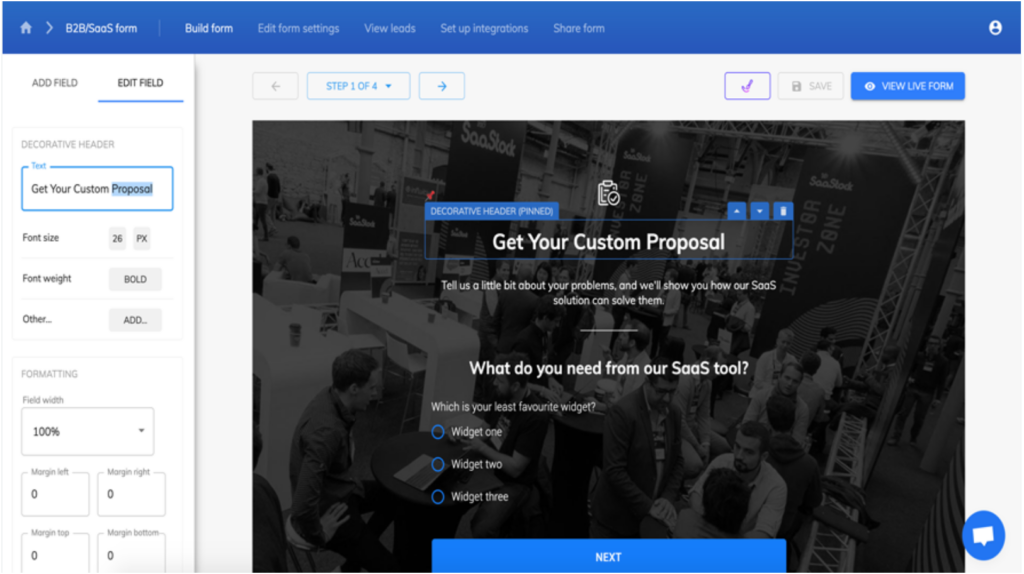
Here are the essential steps we recommend to create a successful lead magnet.
Identify Your Audience and Offer
Determine your target audience and what value you can offer them in exchange for their contact information. This could be an ebook, discount, or free trial that addresses their specific needs and pain points.
Create a Compelling Lead Magnet
Identify your target audience’s specific problem or need and offer a valuable solution or resource that addresses it, such as a guide, checklist, or exclusive discount. Ensure the lead magnet is easily accessible and visually appealing and communicates its benefits to encourage prospects to exchange their contact information.
For example, for lead generation, a compelling lead magnet headline could say something like “Ultimate Guide to Effective Lead Magnets”. Provide detailed strategies, examples, and templates for creating successful lead magnets tailored to different industries.
Design a High-Converting Landing Page
Use a dedicated landing page to promote your lead magnet to focus visitors’ attention on the offer, thus increasing the odds of capturing leads by minimizing distractions and optimizing the conversion process.
Optimize the Opt-In Form
An optimized opt-in form is a polished and straightforward form designed to effectively capture visitor information. Follow these essential tips for high-converting forms.
- Keep the form short and simple. Only ask for essential information.
- Implement multi-step forms. Use Growform’s easy-to-use forms to break up longer forms into more manageable chunks for an engaging experience.
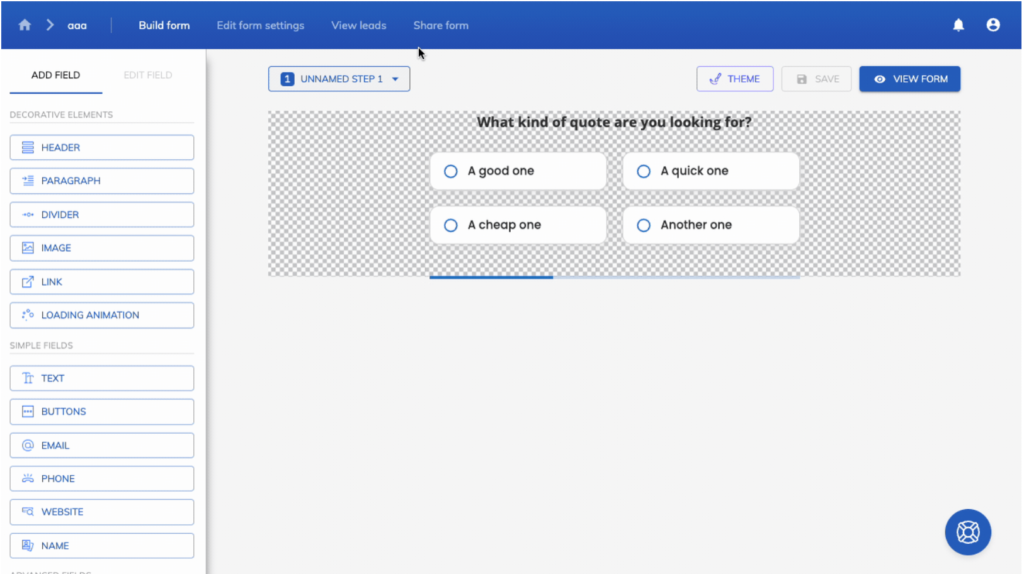
- Use a clear and intriguing call-to-action (CTA) button that stands out visually.
- Place the form prominently above the fold of the page for maximum visibility.
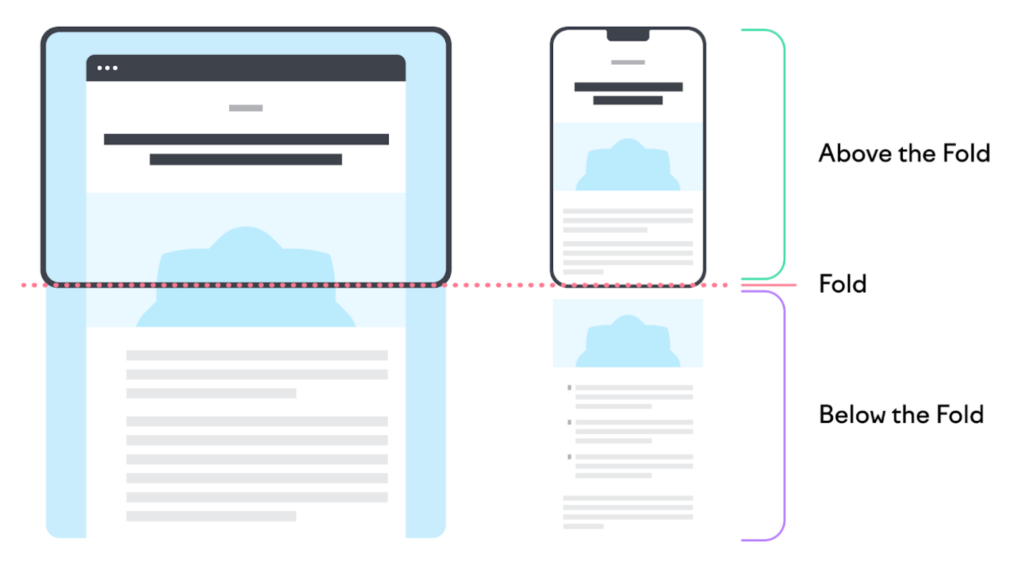
- Use conditional logic to show only relevant fields. Growform’s conditional logic allows forms to dynamically adapt based on user inputs for personalization and relevance.
- Optimize the form for mobile devices with larger touch targets and a simplified layout.
- Include social proof elements like testimonials near the form to build trust.
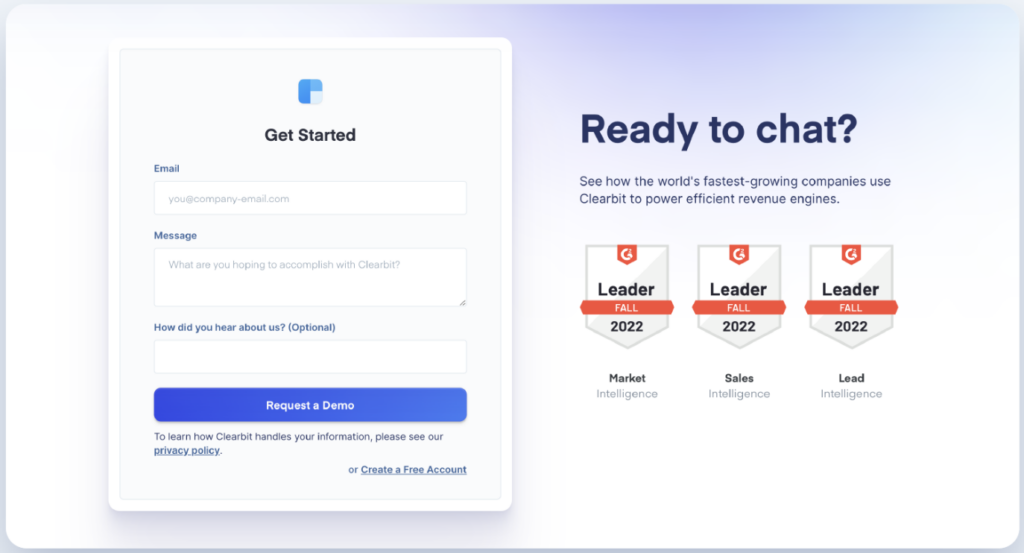
- Use inline form validation to provide immediate feedback on errors. Our form validation ensures that only valid data is submitted for quality and more effective lead generation.
4. Multi-Channel Marketing
Multi-channel marketing uses multiple platforms to connect and engage potential customers, ultimately generating leads. This approach allows businesses to connect with their audience through various touchpoints, increasing visibility and opportunities for conversion.
Excellent methods for multi-channel marketing include:
- Use a Variety of Platforms: Employ social media, email, content marketing (blog posts, videos), Search Engine Optimization (SEO), and Pay Per Click (PPC) to reach prospects.
- Consistent Messaging: Ensure your brand messaging is consistent across all channels.
- Automation Tools: Use tools like HubSpot or EngageBay to automate your multi-channel marketing efforts.
5. SEO and Competitor Analysis
Search Engine Optimization involves optimizing a website to improve its visibility on search engines. The aim is to attract more organic traffic and compete with larger companies by enhancing your online presence and credibility.
Small businesses optimize their websites by prioritizing cost-effective SEO strategies, like producing top-notch, relevant content and enhancing on-page elements. Utilizing free or inexpensive keyword research and analytics tools will aid in tracking how well you attract visitors while fine-tuning strategies without major costs.
Tips for Effective SEO:
- Produce High-Quality Content: Prioritize relevant, well-written content that answers common customer queries.
- Use SEO Tools: Tools like Google Search Console and Ahrefs can help you track performance and identify opportunities for improvement.
- Analyze Competitors: Study your competitors’ keyword strategies and backlinks to refine your own.
6. Webinars and Free Trials
Webinars are online prerecorded or live seminars or presentations conducted over the internet. They provide valuable information or training on a specific topic, allowing small businesses to showcase their expertise and engage directly with potential customers, generating leads through interactive participation. Additionally, free trials offer prospective customers a risk-free opportunity to experience a product or service for a limited time, demonstrating value before purchasing.
Webinars and free trials complement each other effectively in lead generation by working together at different stages of the customer journey. For example, webinars serve as an excellent tool for introducing potential customers to your product or service. They help generate initial interest and attract leads. On the other hand, free trials allow interested leads to experience your offerings firsthand, giving them a practical understanding of its features and benefits.
The complementary nature of these approaches works as follows:
- Webinars: Use webinars to educate potential customers and showcase your expertise.
- Free Trials: Offer free trials to let prospects try your product, increasing the likelihood of conversion.
- Follow-Up: Invite free trial users to attend webinars, reinforcing their engagement with your product and increasing the likelihood of conversion to paid customers.
Common Mistakes to Avoid
Here are some common mistakes small businesses should avoid in lead generation:
- Not Understanding the Market/Audience: Failing to properly segment and understand your target market can lead to generic messaging and ineffective campaigns.
- Poor Data Quality: Using outdated or incomplete data can waste time and resources on unqualified leads.
- Relying on a Single Channel: Don’t believe in “silver bullet” solutions. Successful lead generation often requires a multi-channel approach.
- Ignoring the Entire Buyer Journey: Failing to tailor content and approaches to different stages of the buying process can alienate potential customers.
- Inconsistent Campaigns: Sporadic or infrequent lead generation efforts can lead to feast-or-famine cycles in sales.
- Lack of Follow-Up: Failing to follow up with leads promptly can result in lost opportunities.
Conclusion
Effective lead generation is crucial for the growth and success of any small business. You can significantly enhance your customer acquisition efforts by implementing the strategies outlined in this guide, from cold calling to leveraging webinars and free trials. Remember, the key is understanding your audience, providing value, and consistently engaging with potential leads across multiple channels.
Don’t let another opportunity slip away. Take the first step towards transforming your lead generation process by starting your 14-day free trial with Growform. Our multi-step forms are designed to optimize your lead capture, increase conversion rates, and drive your business forward.
Recent Posts
- We List 9 Landing Page Best Practices to Maximize Conversions
- We Review the Best Lead Qualification Tools to Identify High-Intent Prospects
- We Breakdown 5 Lead Magnet Landing Page Examples (Plus Actionable Tips)
- Our Top Picks for Real Estate Lead Generation Companies to Boost Your Business
- How To Send Conversions To Facebook/Meta via Conversion API (CAPI)
